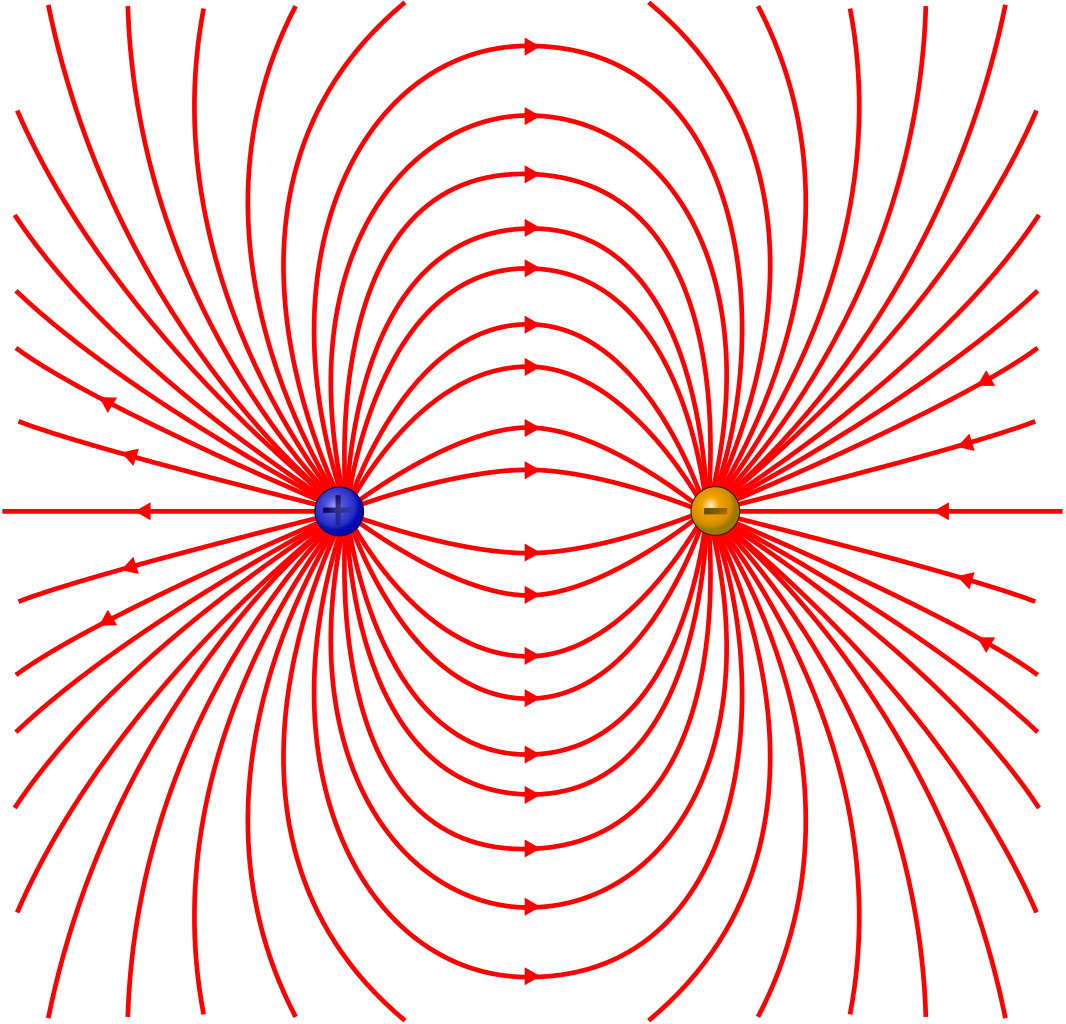18 Electric Fields (A2)
18.1 Electric Fields and Field Lines
Electric Field:
force per unit positive charge
-
An electric field is a field of force that surrounds any charged object or group of charged objects.
-
The force on a charge in an electric field is given by F = qE, where F is the force, q is the charge, and E is the electric field strength.
-
Electric fields can be represented by field lines. Field lines point in the direction of the electric field, and the density of the lines represents the strength of the field.
 -- Electric FIeld lines between a Proton and an Electron
-- Electric FIeld lines between a Proton and an Electron
18.2 Uniform Electric Fields
-
A uniform electric field is a constant electric field between two parallel plates. The field strength of a uniform electric field is given by E = ∆V/∆d, where E is the electric field strength, ∆V is the potential difference between the plates, and ∆d is the distance between the plates.
-
A uniform electric field can affect the motion of charged particles. Charged particles in a uniform electric field will experience a force and move in the direction of the electric field if the particle is positively charged, or in the opposite direction if the particle is negatively charged.
18.3 Electric Force Between Point Charges
-
For a point outside a spherical conductor, the charge on the sphere can be considered to be a point charge at its center.
-
Coulomb's law states that the force (F) between two point charges (Q1 and Q2) in free space is given by F = kQ1Q2/r2, where k is Coulomb's constant, and r is the distance between the charges.
18.4 Electric Field of a Point Charge
- The electric field strength (E) due to a point charge in free space is given by E = kQ/r2, where Q is the charge of the point charge, and r is the distance from the point charge.
18.5 Electric Potential
Electric Potential:
work done per unit positive charge in bringing a small test charge from infinity to the point.
-
The electric field at a point is equal to the negative of the potential gradient at that point.
-
The electric potential (V) in the field due to a point charge is given by V = kQ/r, where Q is the charge of the point charge, and r is the distance from the point charge.
-
The electric potential energy (U) of two point charges is given by U = kQ1Q2/r, where Q1 and Q2 are the charges of the two point charges, and r is the distance between them.